The Guaranty Building, formerly called the Prudential Building, is a pioneering skyscraper in Buffalo, New York, designed by iconic Architects Louis Sullivan and Dankmar Adler in 1896. A National Historic Landmark within the Joseph Ellicott Historic District, the building’s ornate architecture and unique design have made it a revered example of American architecture.
The Guaranty Building Technical Information
- Architects: Louis H. Sullivan and Dankmar Adler
- Location: 28 Church Street, Buffalo, New York, United States
- Topics: Chicago School Style
- Height: 46 m | 151 ft (13 Floors)
- Project Year: 1896
- Designated a National Historic Landmark: 1975
- Photographs: © Nick Stanley
[A tall building]… must be every inch a proud and soaring thing, rising in sheer exultation that from bottom to top it is a unit without a single dissenting line.
– Louis Sullivan
The Guaranty Building Photographs
The Guaranty Building in Historical Context
The Guaranty Building, originally intended to be called “The Taylor Building,” was the brainchild of Buffalo businessman Hascal T. Taylor. He envisioned a speculative office building in the bustling downtown district, strategically located near key institutions and the county and city municipal building, to attract high-end tenants such as lawyers with its close proximity, desirable amenities, and captivating design by renowned architect Louis Sullivan. The Guaranty Construction Company was contracted to build it, but following Taylor’s sudden death during the project’s peak, the company decided to take on the project alone.
At the same time, the Ellicott Square Building, two blocks away, was also being built as the largest retail building in the world, showcasing a different approach to commercial urban architecture by Charles B. Atwood and Daniel Burnham.
As Buffalo’s downtown rose above Lake Erie, it saw further engineering advancements, including the use of hydroelectricity from Niagara Falls to light up the city.
Buffalo’s rise in the built environment was mirrored in politics with Grover Cleveland, former Erie County Sheriff, re-elected as the 22nd president of the United States. Cleveland’s platform of reform against political machines, bossism, and patronage was much needed, particularly in major urban centers such as New York and Chicago. Although Cleveland’s fiscal policies resulted in his loss of the presidency in 1888, he was reinstated in 1892 after the interim term of Benjamin Harrison. The panic of 1893, which destroyed the firm of Adler & Sullivan, also led to Cleveland’s return to the office and the final commission of Adler & Sullivan in Buffalo.
The Design: A Monument of Modern Architecture
The Guaranty Building features a U-shaped plan on the upper floors, allowing each office to have natural light and fresh air. The internal part of the “U” faces south and has white glazed terracotta lining the stairwell and a light slit for increased light. The elevators and stairways are enclosed in metal cages to allow light into the hallways.
Sullivan’s design follows the principle “form follows function.” The building was divided into four zones: basement (mechanical and utility area), lower levels (public areas with street-facing shops and entrances), office floors (with identical office cells), and attic (with elevator equipment and utilities). The steel structure of the building was adorned with terra cotta blocks, with different styles of blocks highlighting the three visible zones. Sullivan said a tall building must be uniform and proud, rising in exultation without a single dissenting line.
The Ornamentation of the Guaranty Building
The Guaranty Building features a rich program of floral terracotta ornament despite Sullivan’s stated belief that architects should refrain from ornamentation. The building’s unique ornamentation has been the subject of much scholarly analysis, with various writers exploring its physical manifestation, influences, and evolution.
Vincent Scully and William J.R. Curtis have described the ornamentation as expressing the idea of a tall building as a living organism and physically dramatizing compression, tension, and vertical continuity. Paul Edward Sprague argues that the Guaranty Building reflects Sullivan’s evolving artistic style and identifies Frank Furness as a source of influence.
The Guaranty Building shares many traits with the Wainwright Building, including simplicity of form and richness of detail. Still, it is considered a departure from its predecessor in its more apparent expression of the steel-frame construction. David Van Zanten has found the ornamentation of the Wainwright Building to be more traditional in comparison to the more radical approach taken in the Guaranty.
The Guaranty Building Plans
The Guaranty Building Image Gallery

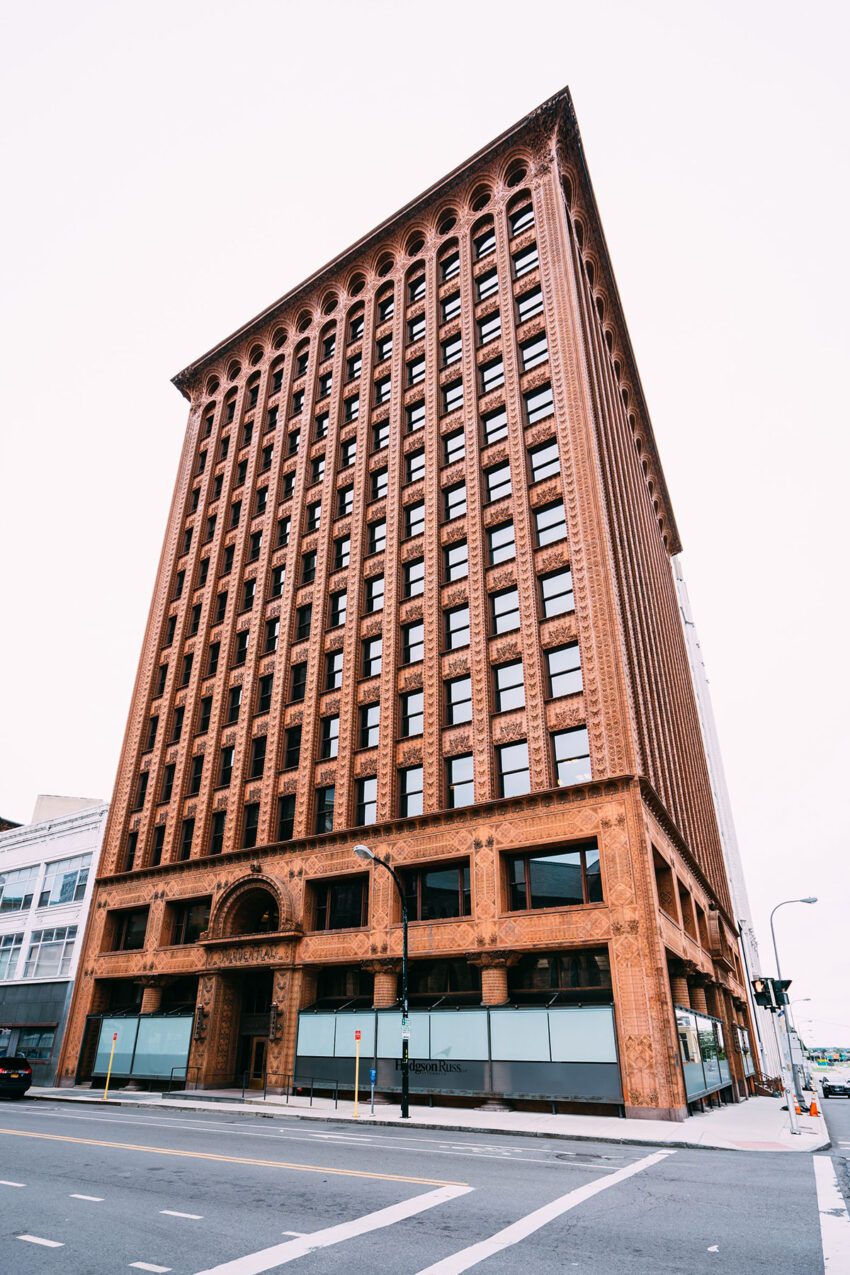

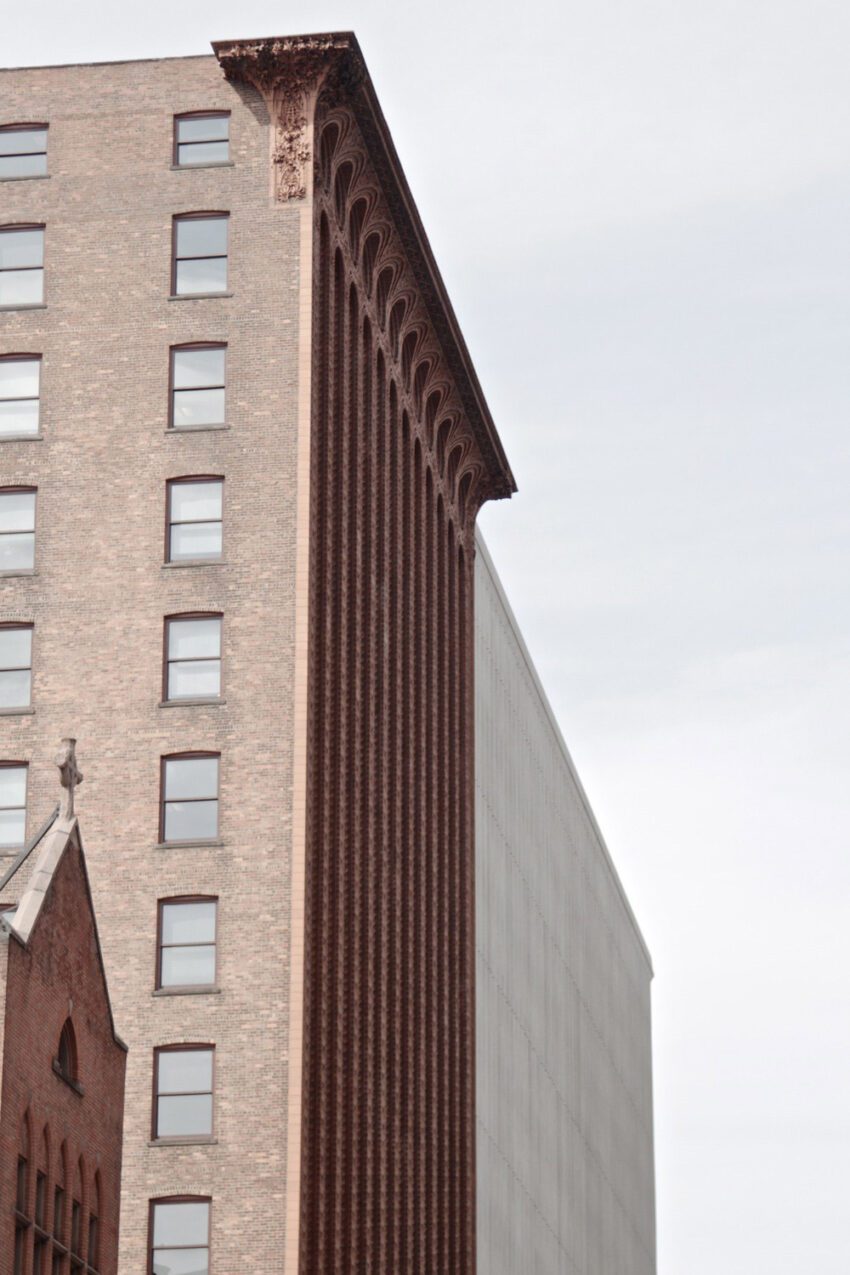

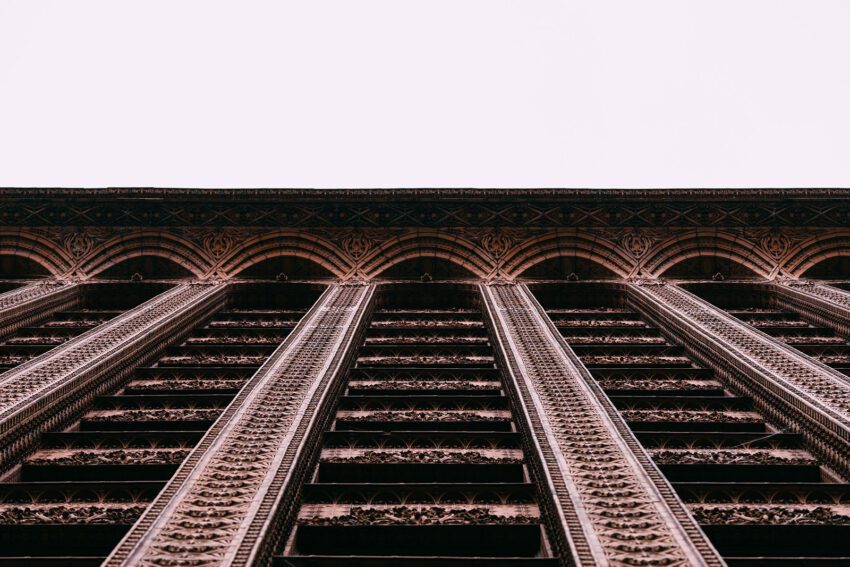
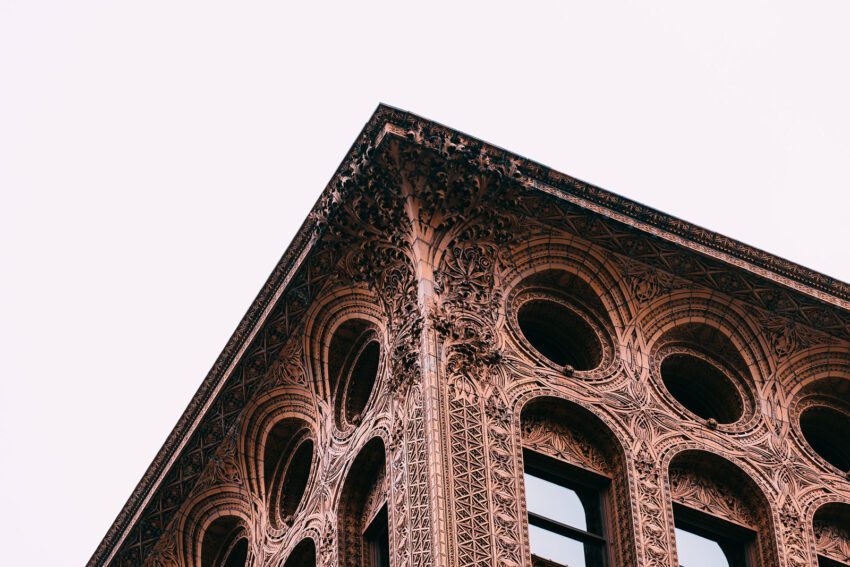
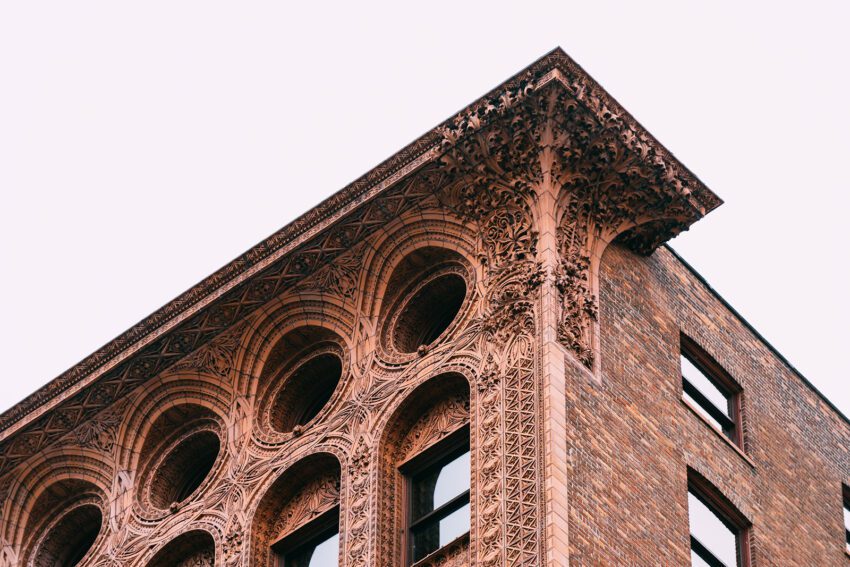
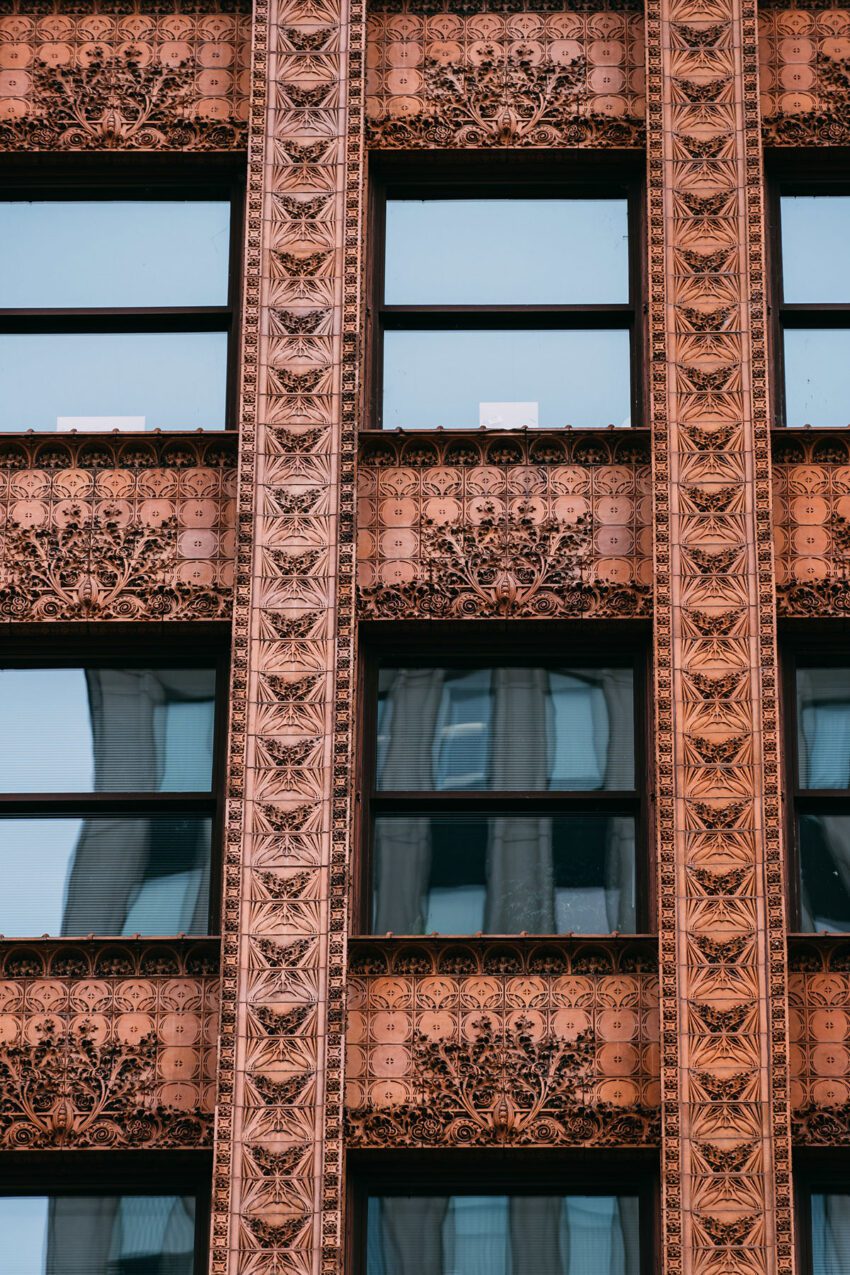

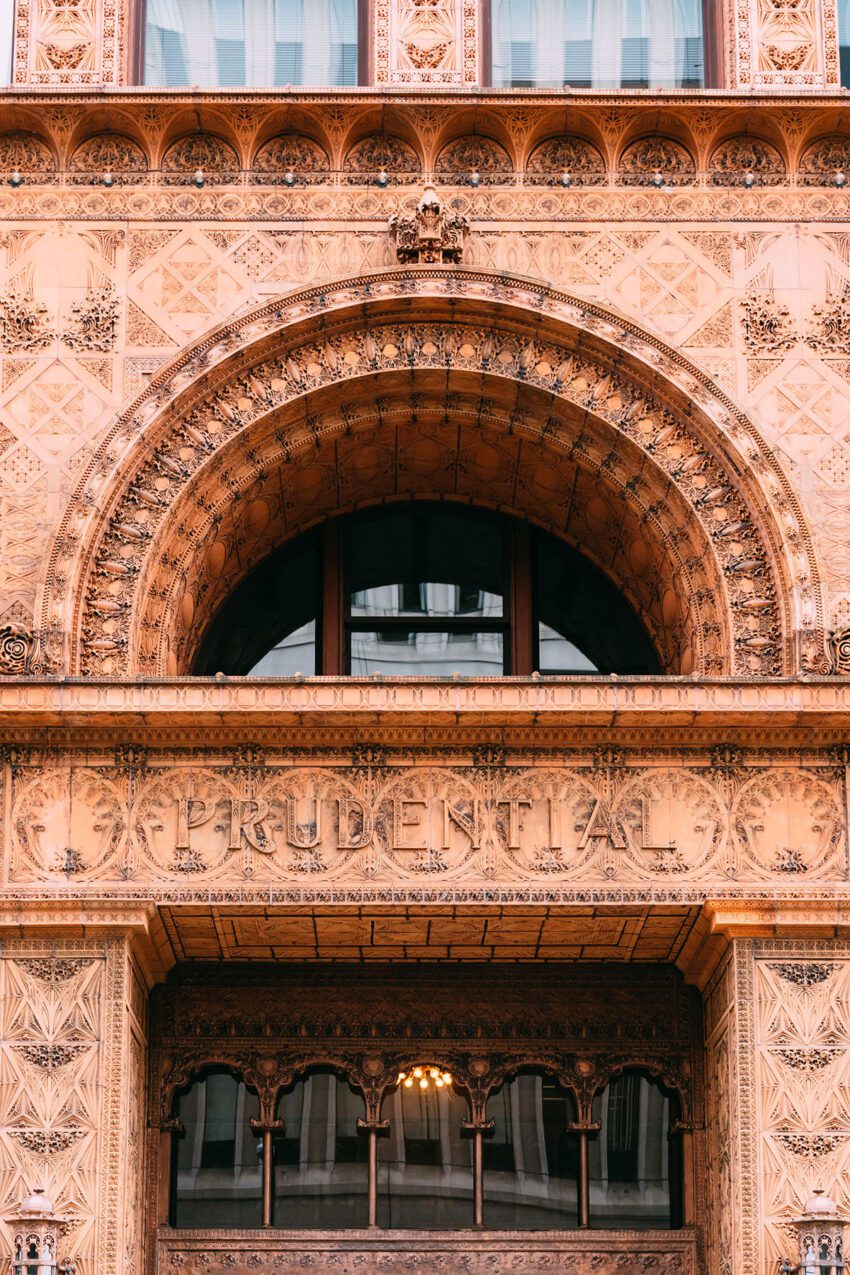
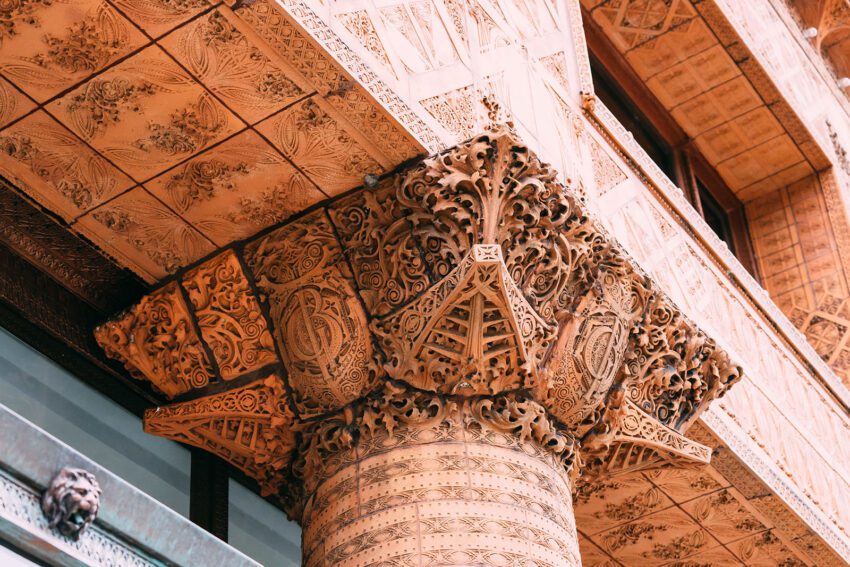
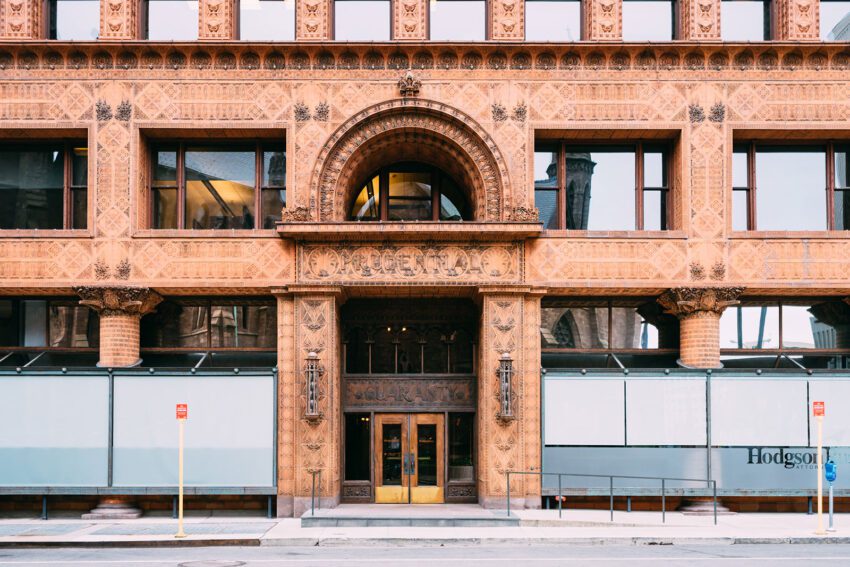
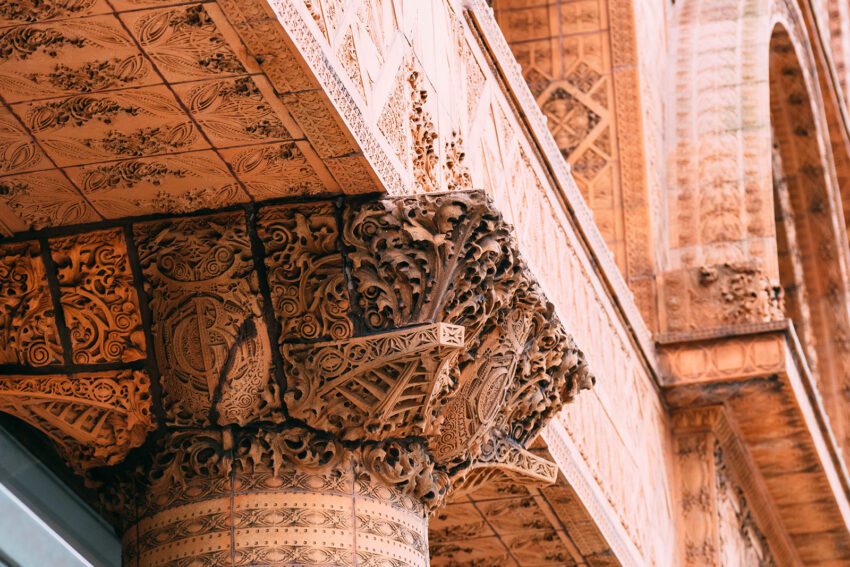
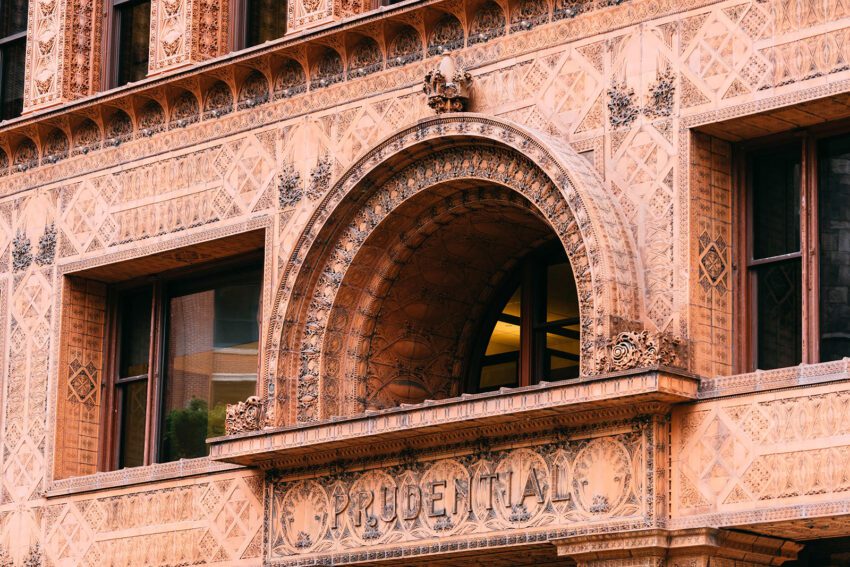
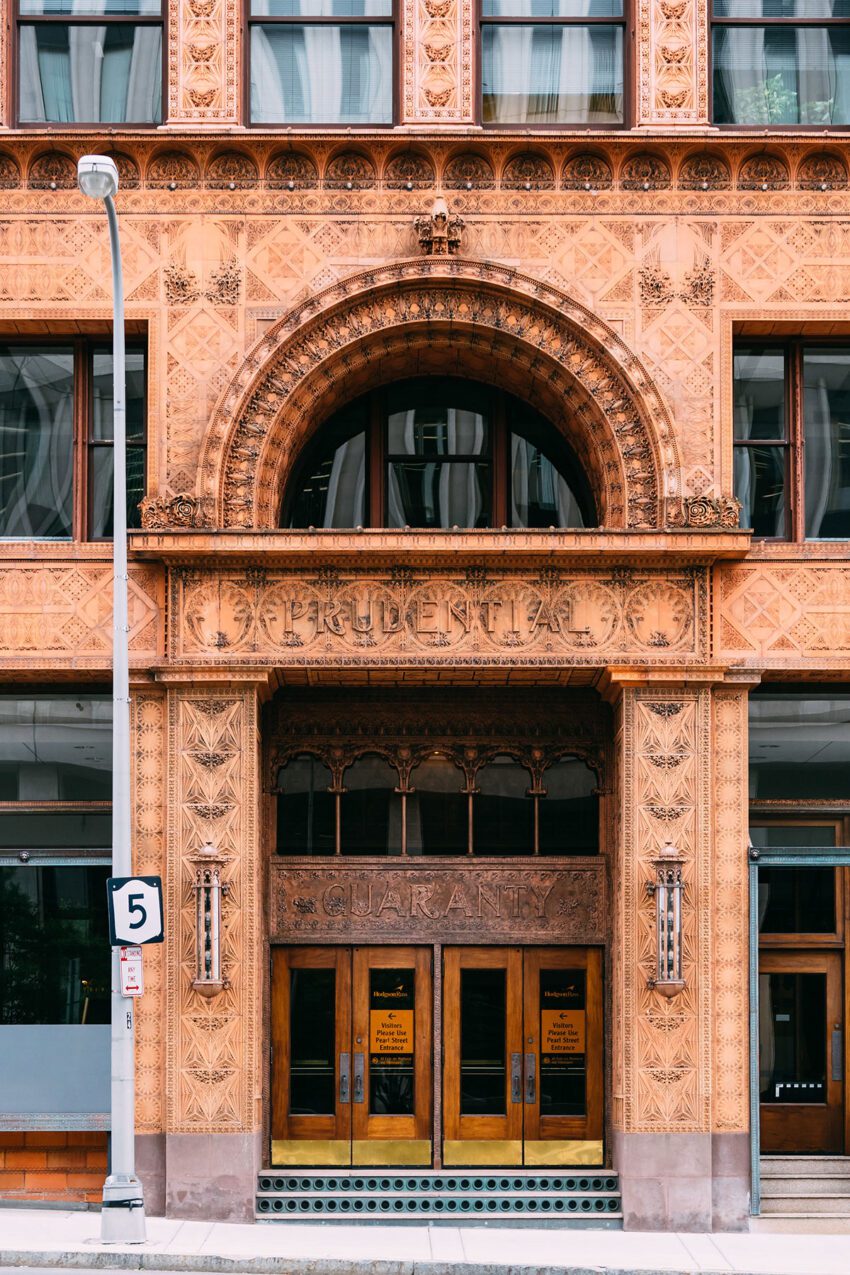

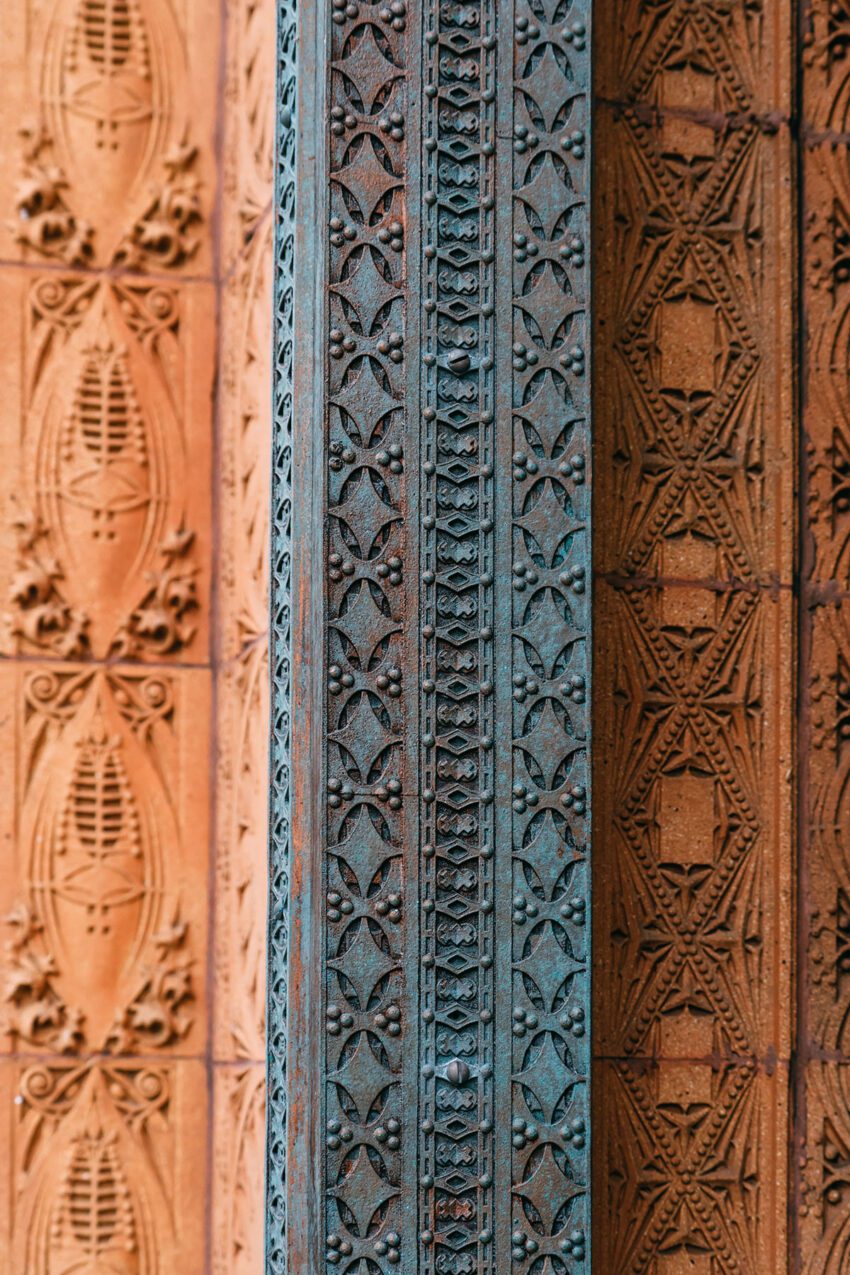
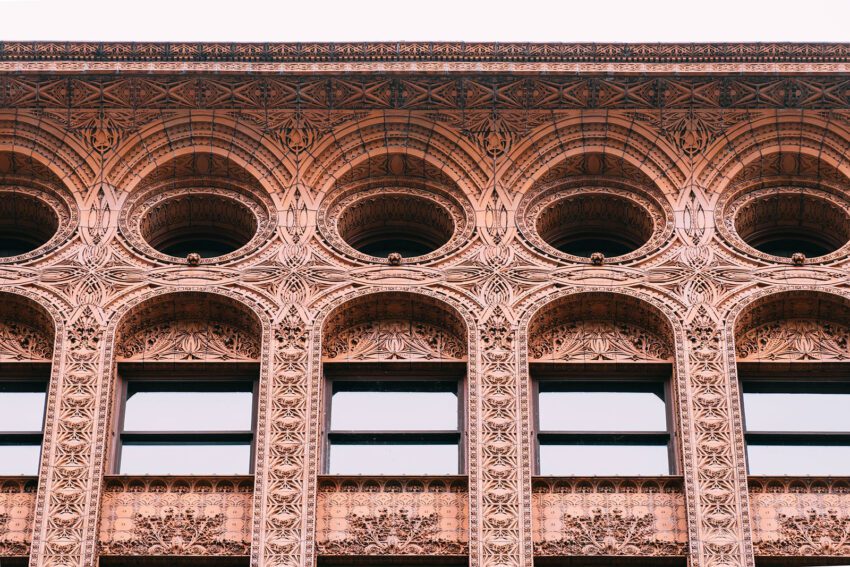
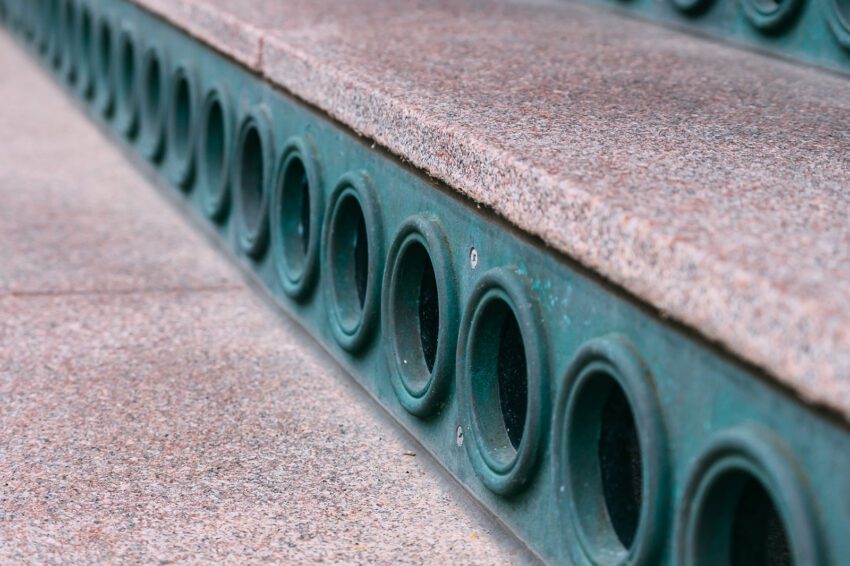
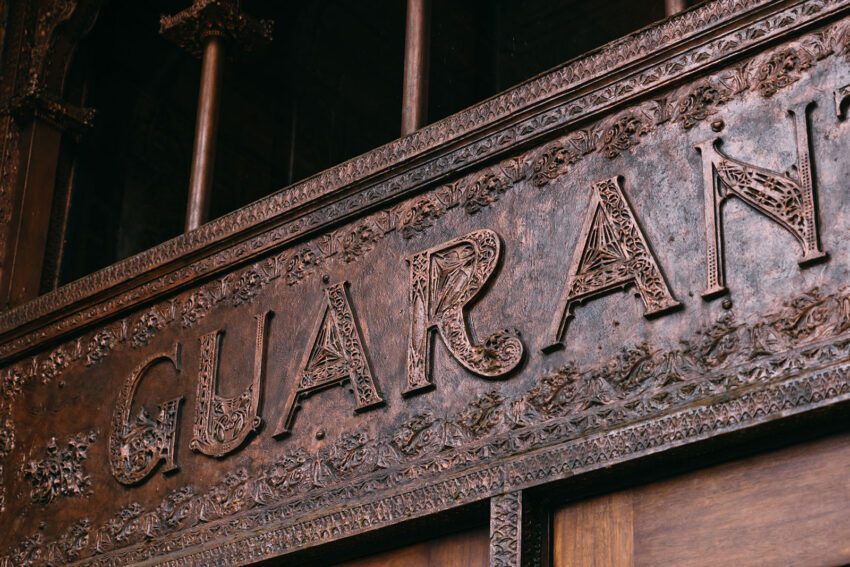
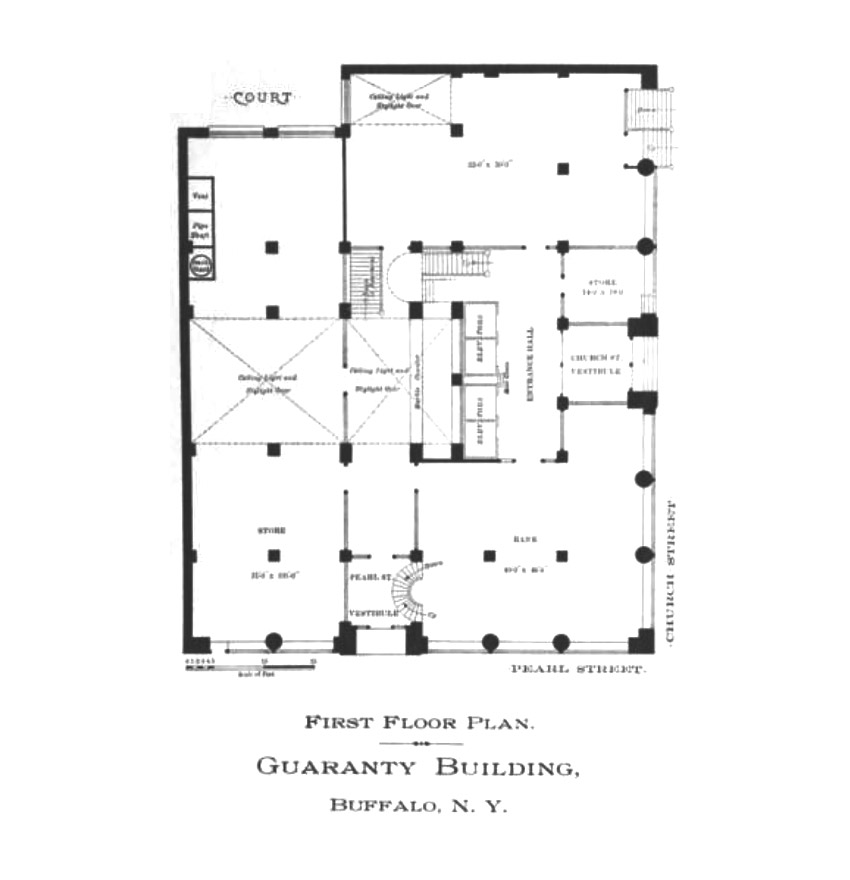
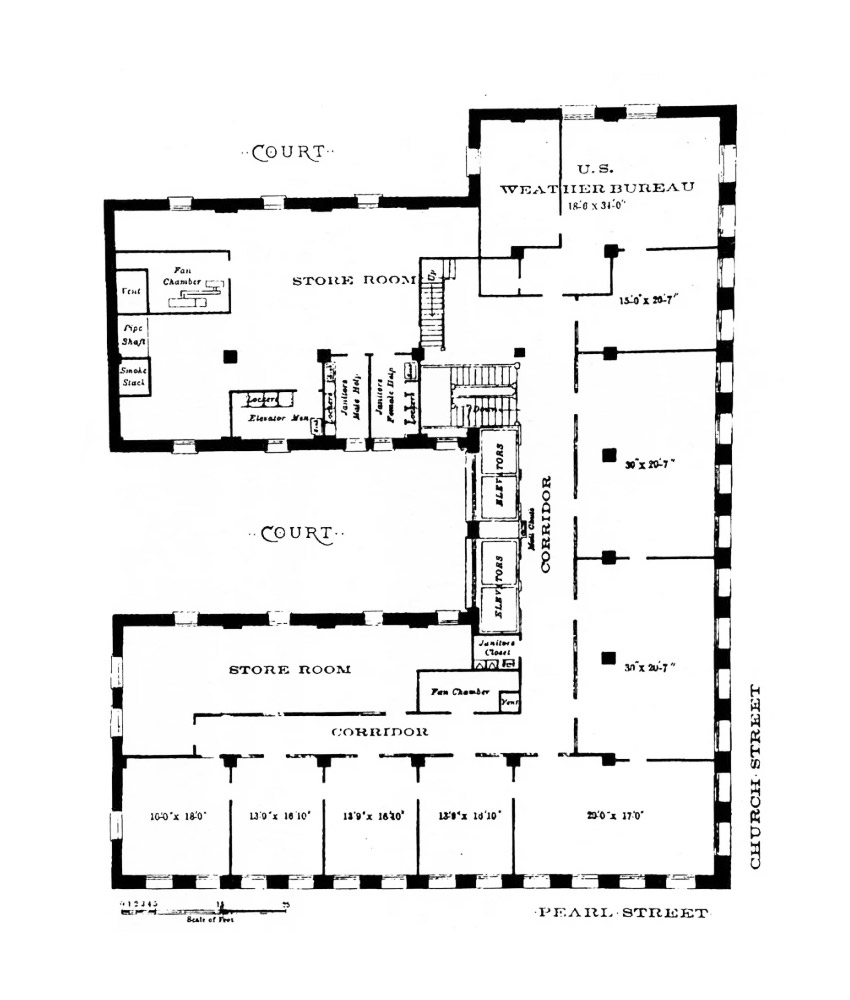
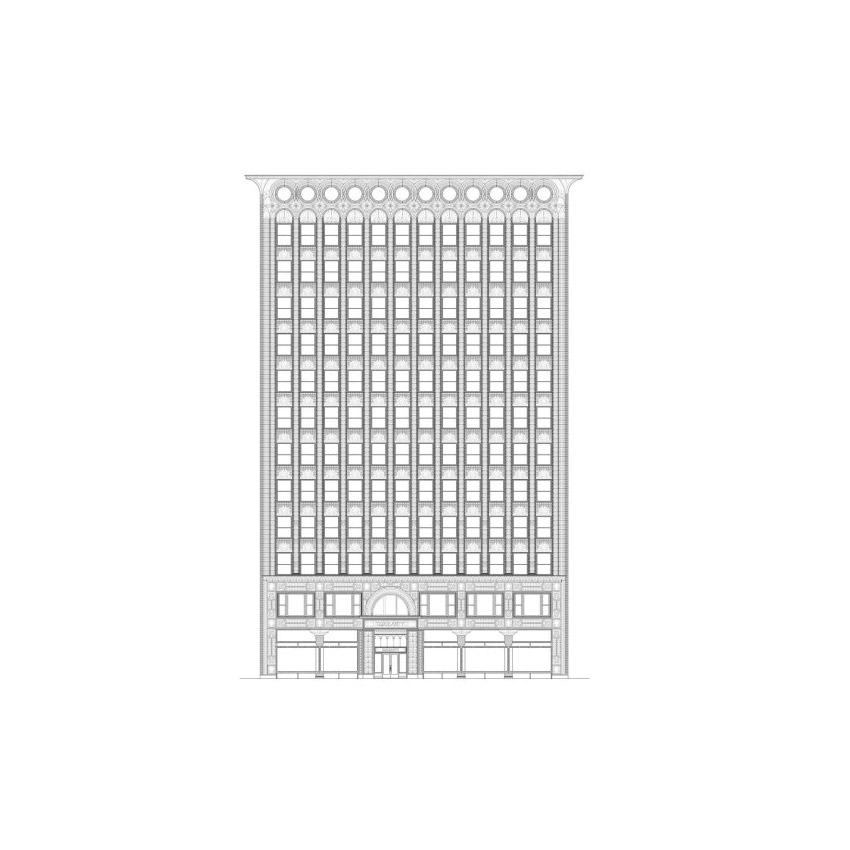
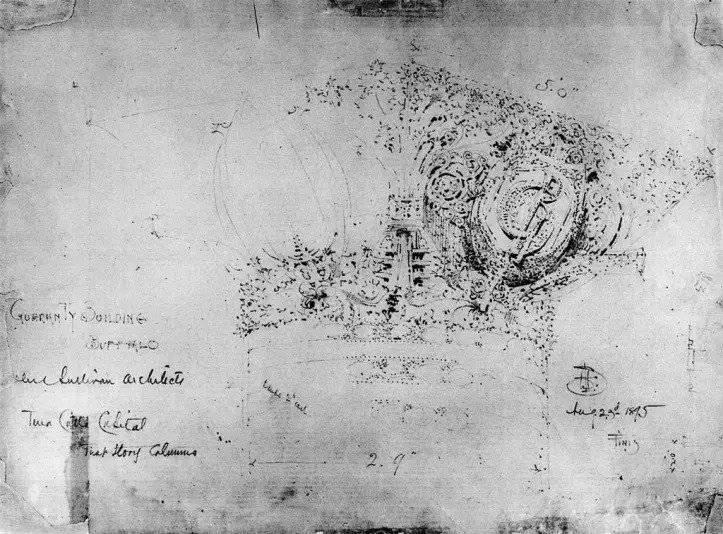
About Louis Sullivan
Louis Sullivan (1856-1924) was a pioneering American architect known as the “father of skyscrapers” and a major figure in modern architecture. He was a key Chicago school member and mentored Frank Lloyd Wright. Along with Wright and Henry Richardson, Sullivan is considered one of the most influential architects of his time. The famous design principle “form follows function” is often attributed to him, although the concept dates back to the ancient Roman architect Vitruvius. Sullivan was awarded the AIA Gold Medal posthumously in 1944, making him the second architect to receive this prestigious award.
[cite]

